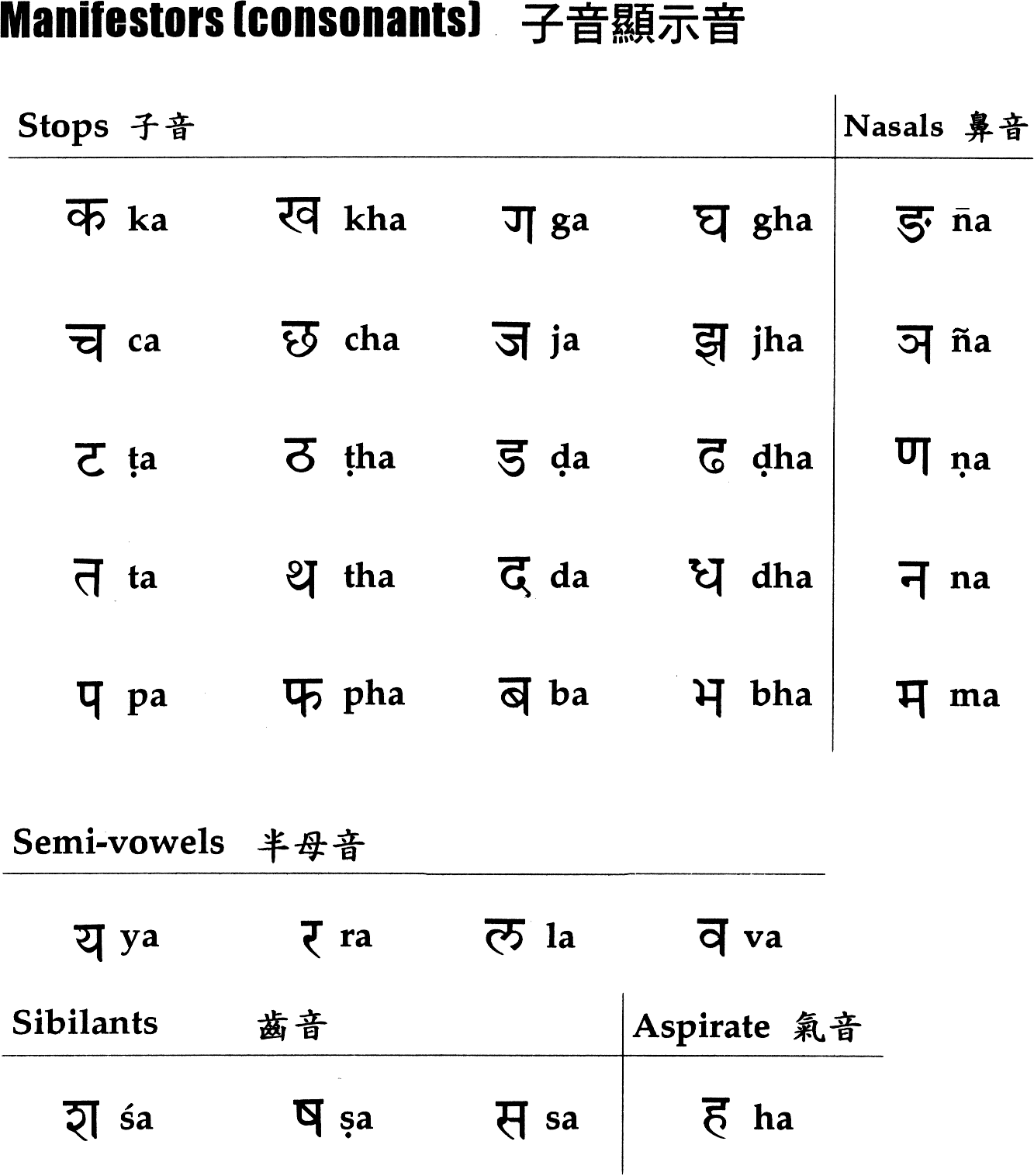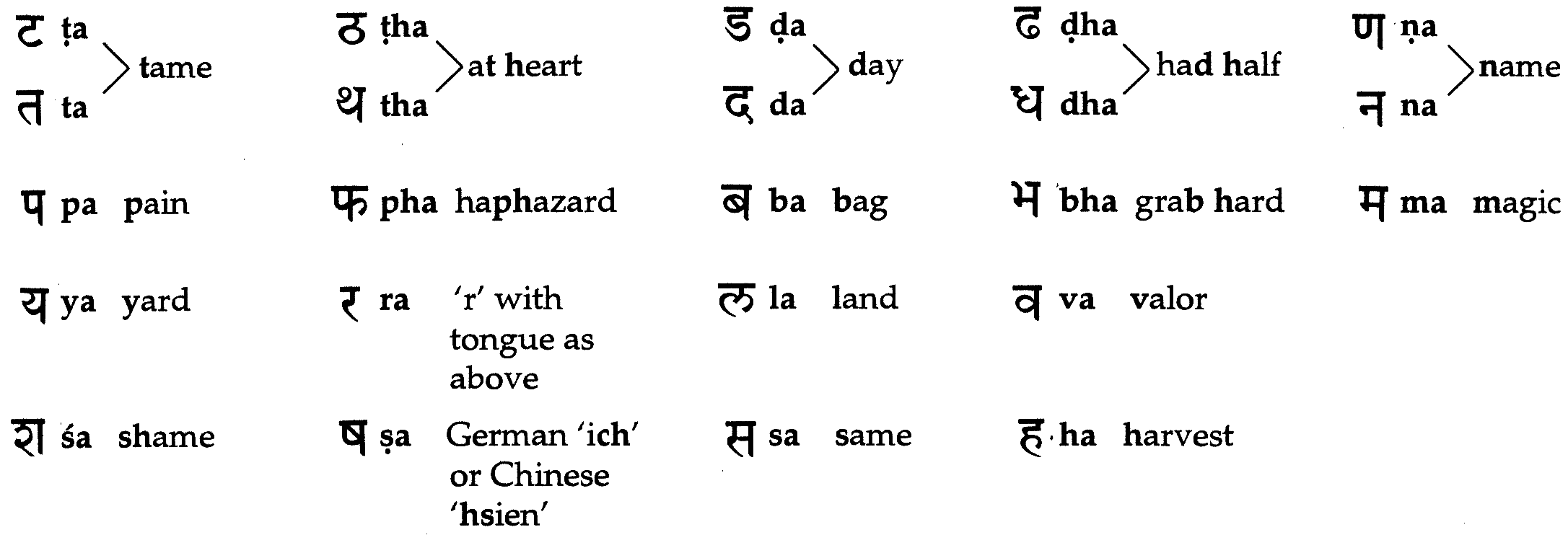子音或顯示音( )(註二) 的安排和母音類似,分為五種: )(註二) 的安排和母音類似,分為五種:

以上為所有的梵文字母。當我們書寫時,這些字母以簡短的形式出現。下一課我們讀梵文版之《佛說阿彌陀經》時,我們會討論。現在看看你是否能想出以下諸字:

子音之發音(其後為英文之相同音)

下面兩行的發音和英文有所不同:第一行發音時,略捲舌尖抵觸上顎。第二行是發音時,舌尖快速略觸上排牙齒。

附記:
(二)前期討論過的「 」 也是佛陀八十隨形好。 」 也是佛陀八十隨形好。
(三)一直線「∣」表示ā(長音的 a)。 |
|
The arrangement of the consonants, or manifestors, ( 2) is similiar to that of the vowels. There are five different types, all given below: 2) is similiar to that of the vowels. There are five different types, all given below:

This completes the Sanskrit alphabet or syllabary. When it comes to writing actual words, these letters turn up in shortened versions which we’ll discuss next time, and that’s when we begin to read The Buddha Speaks of Amitabha Sutra in the Sanskrit! Until then see if you can figure out these words:

How to pronounce the consonants

The consonantal sounds are different from those in English for the manifestors in the next two rows below. For the first row, curl tip of tongue slightly back against the ridge behind the upper front teeth. Touch tongue quickly against the teeth to say the second row.

Notes:
2As was said before,  are also the eighty minor characteristics of the Buddha. are also the eighty minor characteristics of the Buddha.
3The single vertical line∣stands for ā.
|